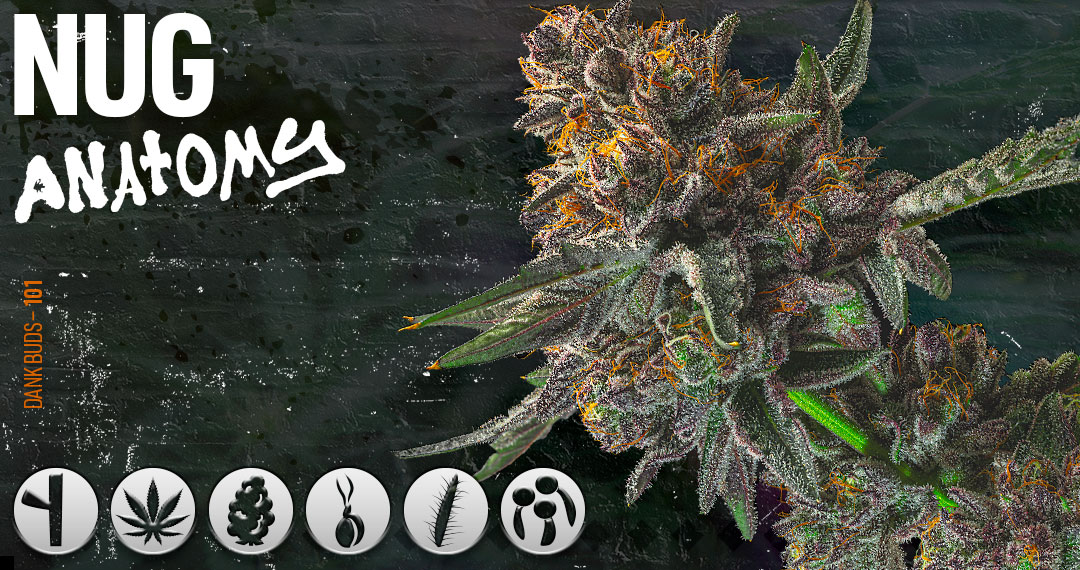Diving into weed anatomy.
For the love of the nug and its intricate weed nug anatomy, we at West Coast Cure are committed to our legacy of deeply respecting and caring for cannabis.
For us, being a legacy brand means nothing less than having absolute love, care, and respect for cannabis. And knowing every moving, living part of the weed nug anatomy that leads to those bright, beautiful buds with all those juicy terps and mind-blowing cannabinoids.
Everyone from the seasoned toker to newly canna-curious knows and loves the plant for its sweet, sweet buds. We call those manicured buds nugs because that’s just what they are—golden nuggets of everything that went into the plant from seed to shelf. Knowing the ins and outs of the miraculous plant that gives birth to the precious nugs is key to recognizing true quality and botanical craftsmanship when it’s in your bag. So join us as we take a closer look at the plant that makes it all happen, and the nugs that deliver the goods.
Know Your Nug Anatomy: Parts of the Plant
Mary Jane goes through a wonderful transformation as she grows from tiny seed to full-grown Mother of all dankness. From the branches and palmate leaves that form in infancy to the clusters of sticky, aromatic buds that come into being with changing light cycles, the cannabis plant’s iconic appearance is a testament to its unparalleled diversity and adaptability in the botanical world.
Stem
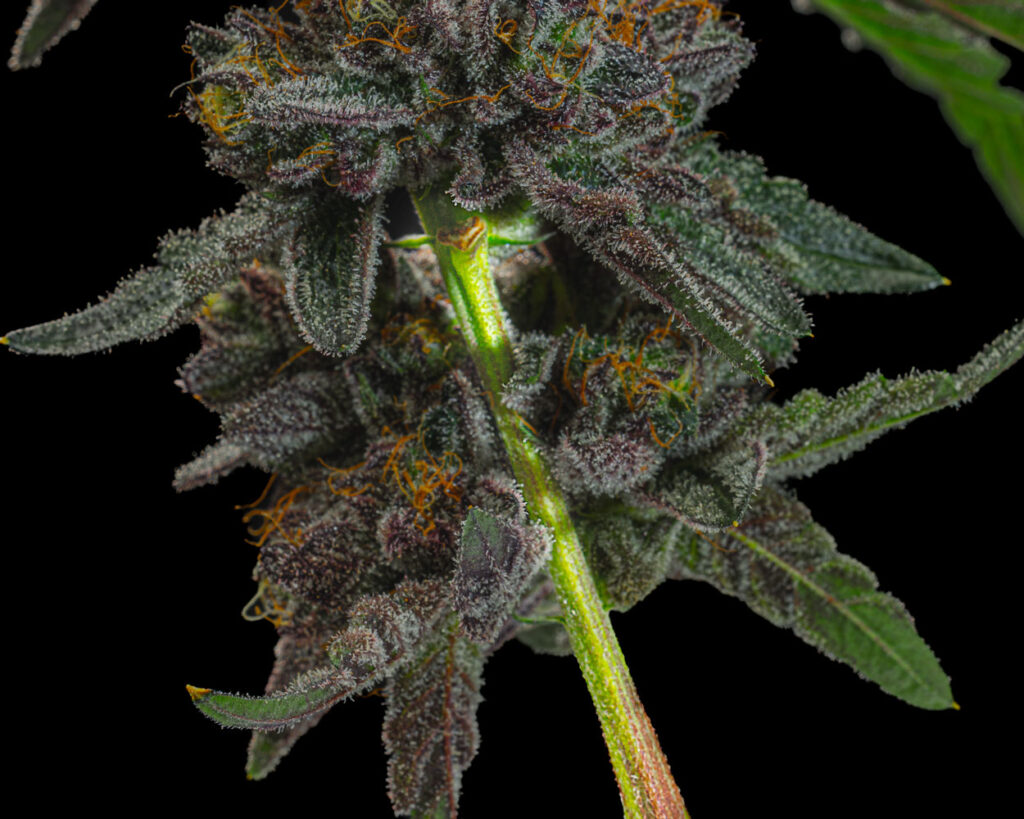
The stem is the cannabis plant’s central support structure in the weed nug anatomy, moving essential fluids and nutrients from the roots to the rest of the plant. The stem also provides the necessary base structure for fan leaves to access light and ensure growth. When those nugs grow to maturity, the stem is there to carry the weight.
Node
The nodes hold one or more leaves, or offshoots, and are vital in determining the sex of the cannabis plant. As the plant grows into gender differentiation, the node will begin to grow a male plant’s pollen sac or female plant’s pistils
Fan Leaves and Sugar Leaves
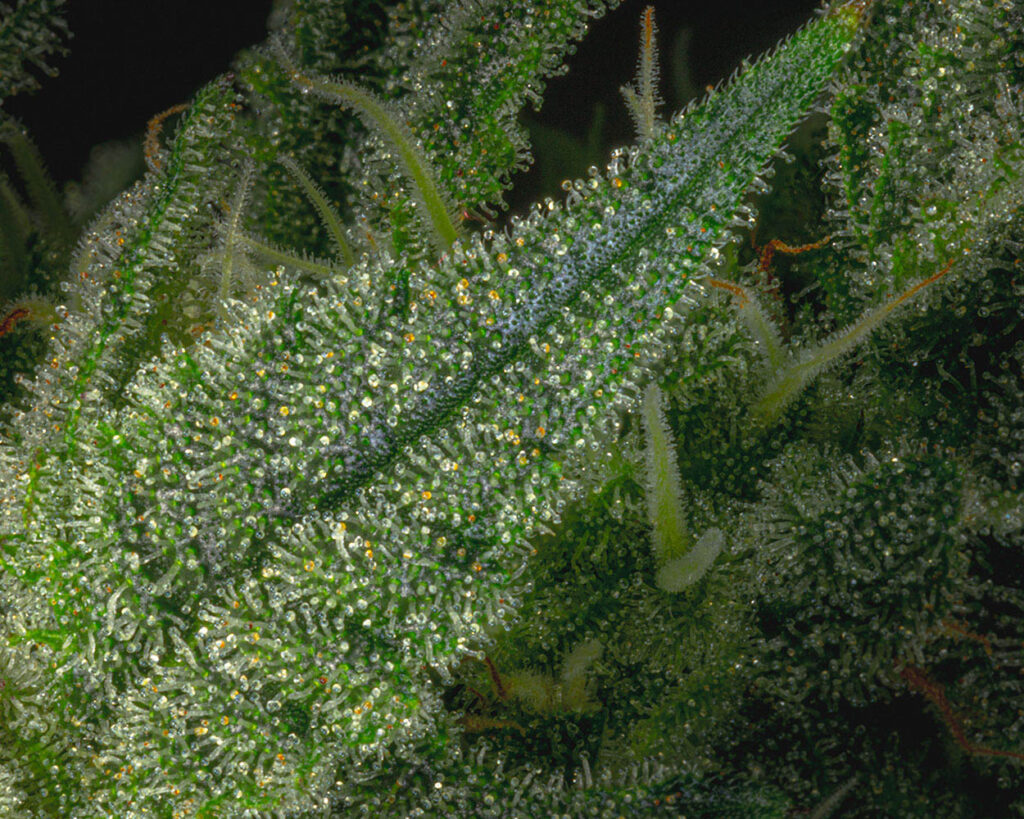
Leaves are essential components of the cannabis plant, and there are two main types: fan leaves and sugar leaves. Fan leaves, the big guys sticking out everywhere, are like the plant’s solar panels, helping it with photosynthesis. Important as they are, fan leaves aren’t what you want for smoking. Instead, we go for the sugar leaves, the small ones surrounding the nugs. They’re called sugar leaves because they’re absolutely covered in trichomes, giving them that iconic sugar-frosted look. Sugar leaf trim is often used in edibles and concentrates.
Flower / Cola
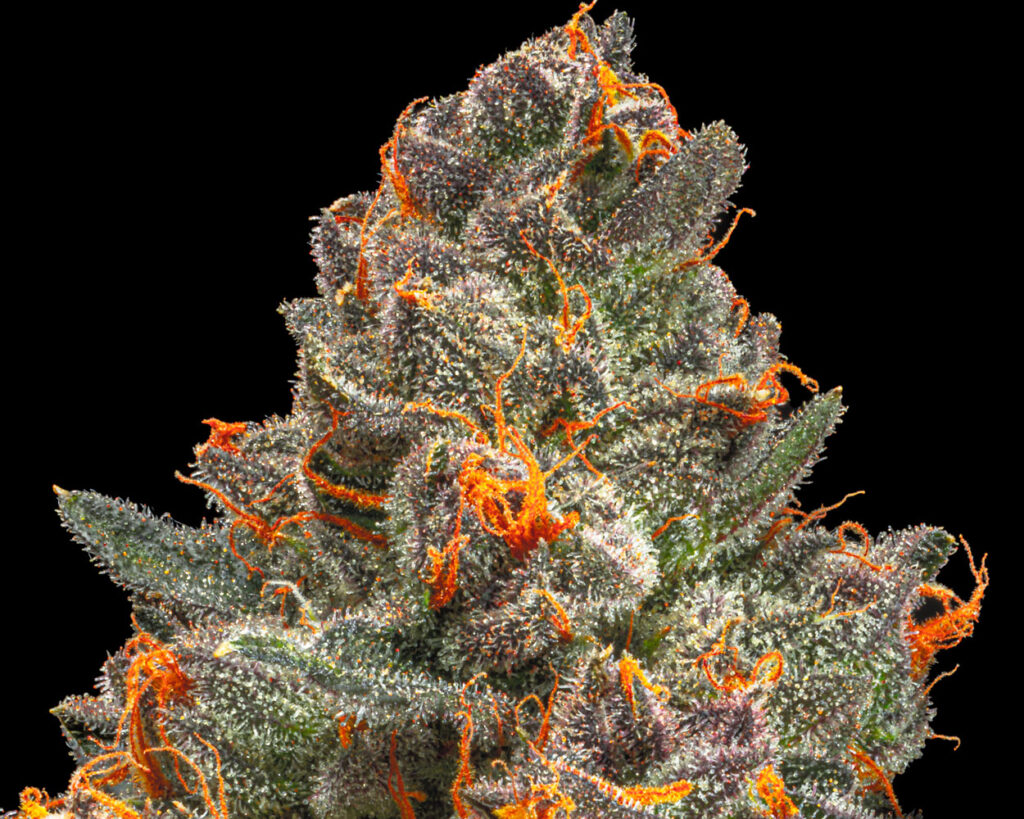
Here it is: the main event. The nug, the crown jewel of the cannabis plant. The cola is the central part of the weed nug anatomy and the site from which small floral clusters grow, packed with trichomes and, by extension, all that THC that gives weed its special buzz. Generally, the more densely populated with frosty trichomes a cola is, the higher the quality of flavor, aroma, and experience.
Bract and Calyx
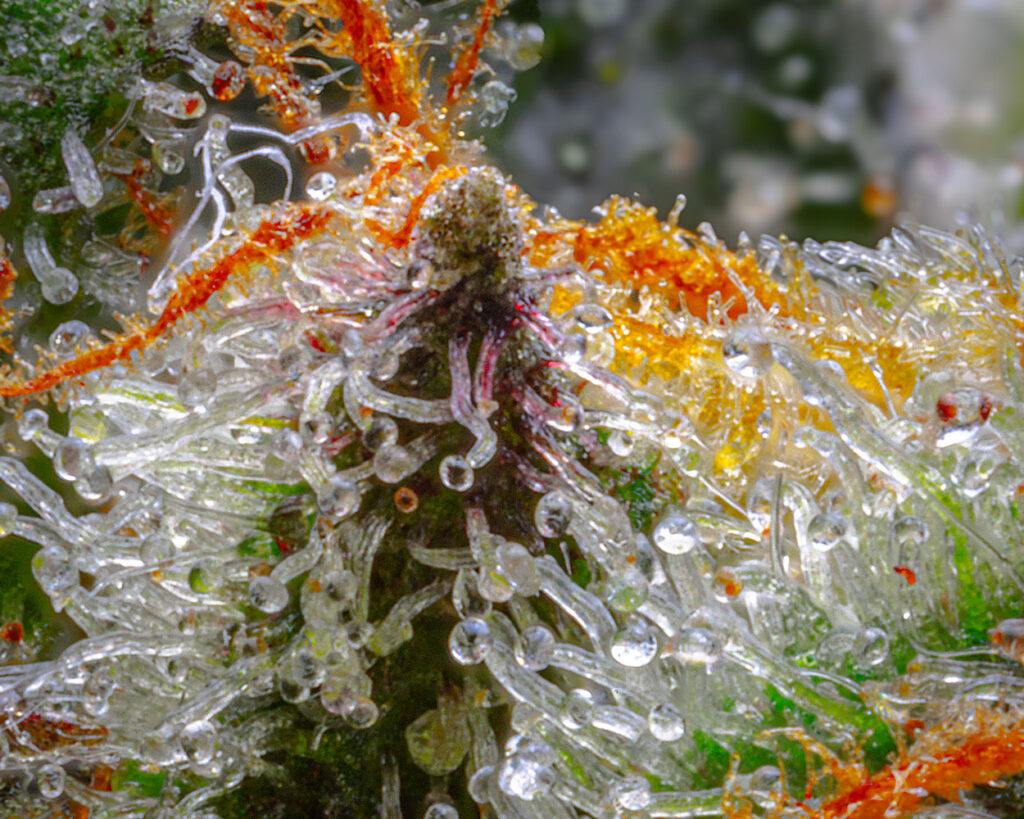
Bracts, often confused with calyxes, are tiny leaves that surround and protect the reproductive cells of the female plant. When exposed to pollen from a male plant, these bracts shield the seed pod and ensure fertilization. The real calyx is a translucent covering of the female plant’s ovule.
Stigma / Pistil
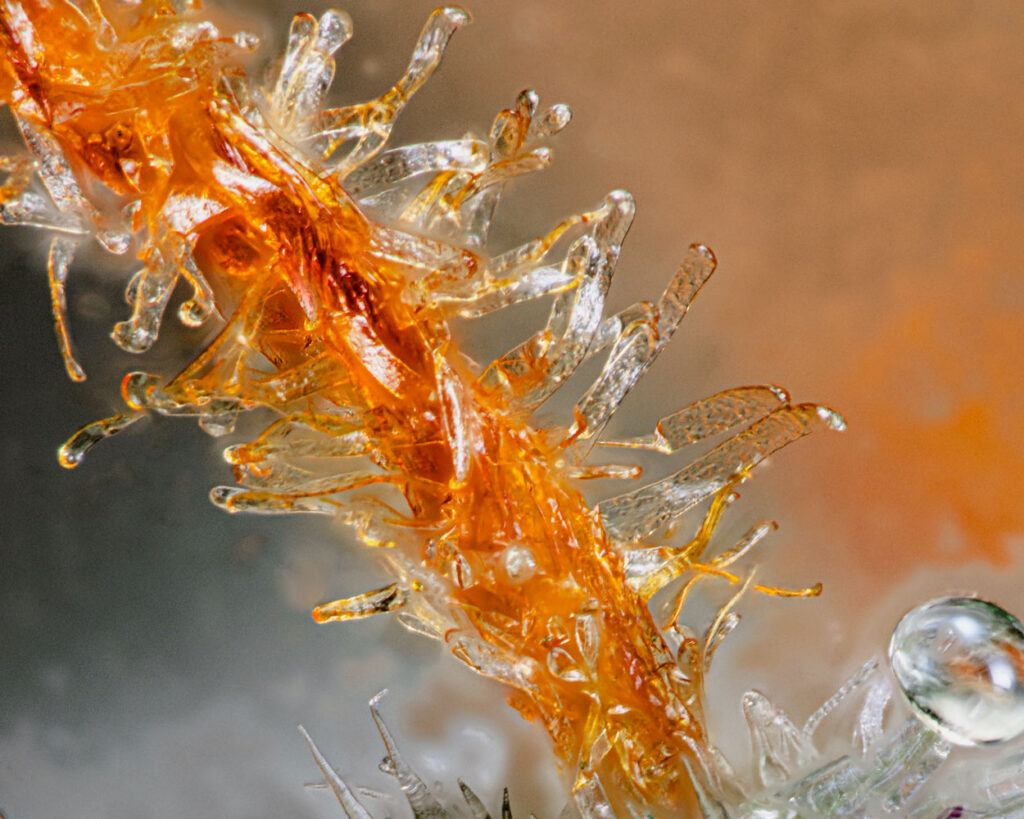
The terms ‘pistil’ and ‘stigma’ have a sordid history of being used interchangeably. But here’s the final word on the matter: The pistil is made up of a single ovule with two protruding stigmas. Stigmas are thin, hair-like structures that extend from the bract to catch male pollen. Identifying stigmas is crucial for growers, signifying the plant is ready to make some top-shelf buds.
Know Your Trichomes: The Three Types
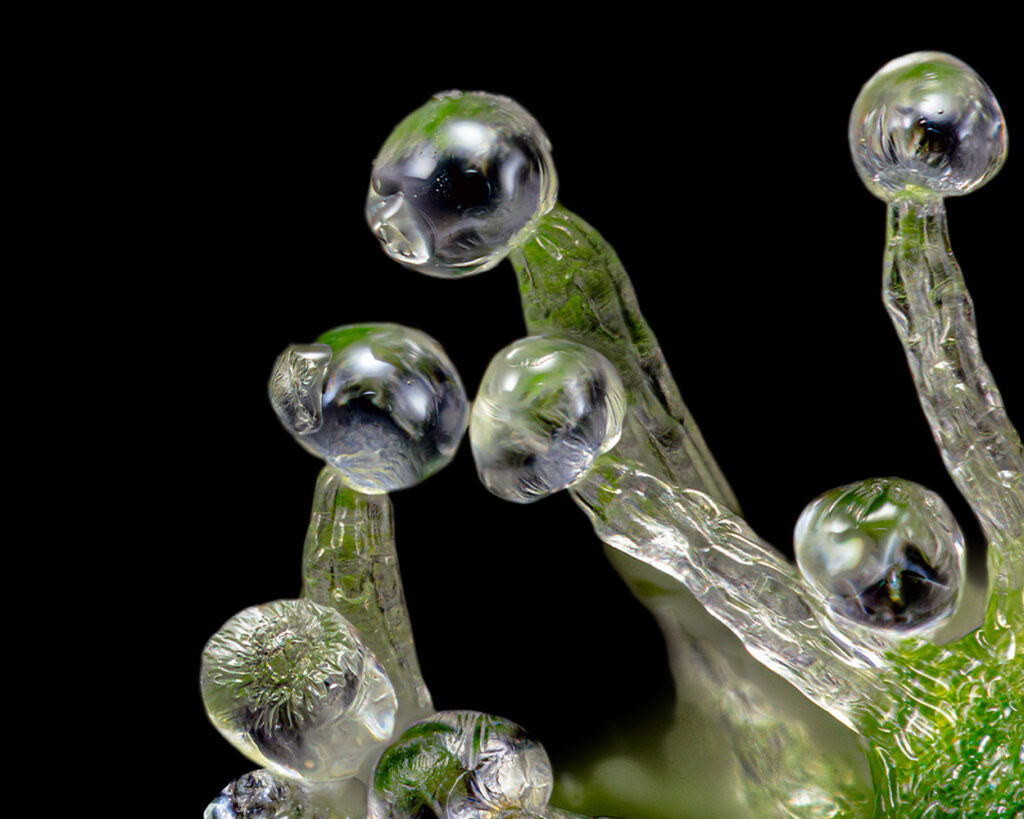
Trichomes are the icing on the cake, covering the cannabis plant with a frosty look and a sticky feel. They’re the plant’s defense system, containing resinous glands that produce cannabinoids, terpenes, and flavonoids. All the goodies we enjoy.
There are three types of glandular trichomes:
- Bulbous Trichomes: Tiny bulbs scattered all over the plant, too small to be seen with the naked eye
- Capitate-Sessile Trichomes: More abundant than bulbous trichomes, found on the underside of sugar leaves and fan leaves, usually visible only through a microscope
- Capitate-Stalked Trichomes: Shaped like mushrooms with a large trichome head at the top of the stalk, easily seen on the surface of the flower.
What Does a Good Nug Look Like?
While size isn’t entirely insignificant, a good nug is more about density. Denser flowers typically indicate better quality and a greater abundance of all those precious compounds. Trichomes aren’t always frosty white, but should have a prominent crystal-like appearance. They not only enhance visual appeal but also reflect careful cultivation and handling.
As for the feel, a high-quality nug should be sticky to the touch, like syrup but not overly so. Avoid confusing stickiness with moisture, which could signify improper drying and curing. The ideal nug strikes a balance, being easy to break without crumbling into dust.
How to Spot a Male vs. Female Plant
What are the observable differences between the male and female cannabis plant? Knowing them is key to cultivation. Only female plants produce the coveted flowers rich in THC and other cannabinoids. Male plants, on the other hand, produce pollen sacs—essential for fertilization but not for consumption.
Female cannabis flowers do have calyx cells, but they do not have a defined calyx. The calyx cells are part of the perianth, a delicate veil of tissue that partially encloses the ovule or potential seed. In botanical terms, a perianth is made up of a corolla and sepals. Sepals are the green cup-like structures that protect the flower’s base.
Quality Nugs: The WCC Difference
Whether you’re a seasoned toker or an enthusiastic newbie, exploring the anatomy of the nug adds a whole new level of appreciation for the experiences it facilitates. And when you’re ready to experience the full-spectrum cannabis trip, check out our dank indoor and top-shelf flower options. Our Top Shelf bud boasts elevated THC content and carefully preserved terpenes, ensuring a fragrant and potent experience. For those seeking quality on a budget-friendly level, our Premium nugs are a terpene-rich choice in a convenient resealable package. The legacy farmers we work with have perfected their craft, working carefully with the environment to produce the ultimate expression of cannabis flower—dense, vibrant nugs in all their variety.
